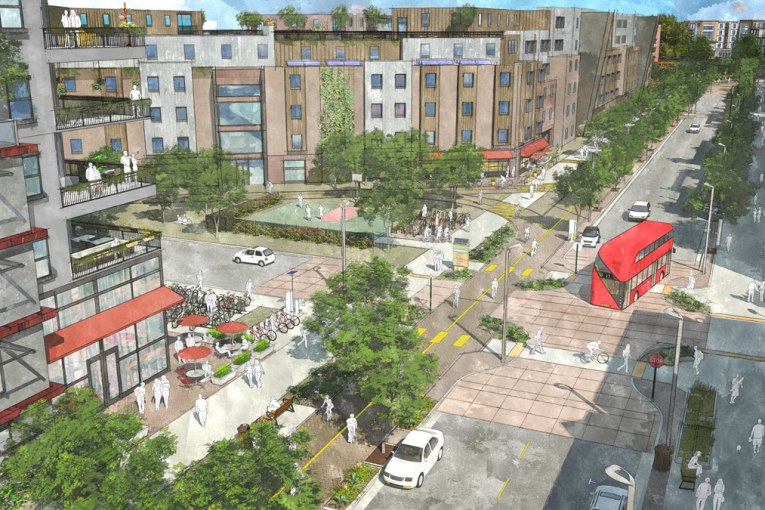
 By Jeff Miller and Dan Carson
By Jeff Miller and Dan Carson
As chair and vice chair, respectively, of the city’s Finance and Budget Commission, we have been observing the ongoing public debate about Measure A and, in particular, arguments as to whether the Nishi Gateway project being presented for voter approval is a positive or negative for city finances and the local economy. We thought it might help if we shared what we discovered from our research on this project.
In December 2014, the City Council adopted eight different sets of goals that any innovation center must meet. At the direction of the City Council, our commission has been examining in a series of meetings since May 2015 whether the project was consistent with the specific set of city goals pertaining to the potential fiscal and economic impacts of Nishi Gateway.
Our volunteer commission took this assignment very seriously, pouring over a series of detailed consultant studies, posing hundreds of questions, and spending many hours in discussion and debate. By a 5-1-1 vote, the Finance and Budget Commission adopted the following motion on February 8, 2016:
The Finance and Budget Commission finds that the Nishi Gateway project could provide a significant economic benefit to the city and the surrounding region in greatly increased economic activity, jobs, business-to-business sales opportunities, and productive partnerships with Davis’ largest employer, UC Davis.
The projections capture the gross impact of the project. The net economic impact would be lower to the extent that Nishi Gateway substitutes for some development that might otherwise have occurred elsewhere in the city or the region.
However, the development of Nishi Gateway would itself generate significant demand for commercial real estate development within the city and spur business activity in nearby downtown Davis. Both the economic and environmental analyses of the innovation park projects confirm that a large part of the undeveloped commercial lands within the city are unavailable or unsuitable for innovation parks and thus would be insufficient to meet the city’s long-term economic development goals.
The commission also finds that the Nishi Gateway project could achieve a significant direct net fiscal benefit to the city that, in the long term at full build-out, could reach $1.4 million annually, with one-time net fiscal benefits in the millions of dollars. Other local agencies, including the county and Davis Joint Unified School District, would also cumulatively receive millions of dollars in additional revenues as a result of the project.
In December 2014, the City Council adopted a set of Guiding Principles outlining the city’s goals for innovation centers like Nishi Gateway. Section 7 outlined desired economic and fiscal impacts from innovation centers. The commission finds that, in concept, the project as currently proposed meets each of the specific components of section 7. However, the commission intends to review these findings after a development agreement has been completed and a tax-sharing agreement with the county has been negotiated and to inform the City Council of the results of that review.
Finally, we recommend that the council take steps to ensure transparency and accountability in the use of new fiscal resources generated from the project, particularly (a) the revenue stream from a proposed Services Community Facilities District, (b) construction tax revenues, and (c) a proposed Development Commitment of $1 million for housing, civics arts, a local carbon offset, and a downtown parking management plan.
Allocations of these funds should only follow detailed disclosure of how they are to be used, adoption of metrics to measure success in the use of the funds, and subsequent reporting how the funds were actually spent and whether stated goals for their use were achieved.
Finally, the city should examine the feasibility of reserving some part of the funds derived from the project to ensure it is fiscally sustainable – that is, that resources are available in the long term to offset eventual increases in city costs for infrastructure and city operations.
As Davis citizens, we collectively face formidable long-term challenges finding resources to pay for renovating our worn-out infrastructure and dealing with employee compensation costs. In keeping with our new mission statement, our commission will continue to focus on examining how this city can address these significant long-term fiscal liabilities and needed new revenue with a transparent and accountable perspective.
Speaking as two Davis citizens who spent much time reviewing the data presented to us, we have concluded that Nishi Gateway economic development project will help put the City of Davis on a long-term financially sustainable path. Accordingly, we will be voting yes on Measure A on June 7.
Jeff Miller over the last 13 years has been a business owner providing business/financial consulting services. The prior 10 years he worked in the information technology world, specializing in system integration and business process reengineering. Dan Carson worked for 17 years in the Legislative Analyst’s Office, a nonpartisan fiscal and policy adviser to the California Legislature, retiring in 2012 as deputy legislative analyst.
To me this is the key point: “the economic and environmental analyses of the innovation park projects confirm that a large part of the undeveloped commercial lands within the city are unavailable or unsuitable for innovation parks and thus would be insufficient to meet the city’s long-term economic development goals.”
I actually believe $1.4 million will end up being a low number because it doesn’t account for the inflators of a company that establishes itself at Nishi, and then moves up as it grows in size and employees.